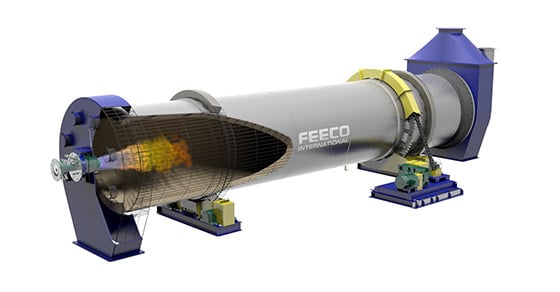As one of the most recyclable materials around, aluminum recycling is a profitable business, both for industry and for the environment. According to the Aluminum Association, almost 75% of all aluminum ever produced is still in use today. The Aluminum Association also states that the recycling of just one single aluminum can saves enough energy to listen to a full album on an iPod, with recycling boasting greater than a 90% energy savings over producing new aluminum.
While the recycling of aluminum is a feat in and of itself, one process has further improved upon recycling: decoating.
What is Decoating?
Sometimes called delacquering, decoating is a process by which the coatings applied to aluminum products are removed from the scrap material.
Aluminum can be found in an array of products, from beverage cans and food containers to construction materials and car parts, and just about everything in between.
With this widespread use and variety in application, the coatings which are applied to aluminum to meet their intended application are just as varied. From paint and ink to plastics, oils, and lacquers, aluminum coatings come in all forms.
And while these materials allow aluminum to be tailored to its intended use, they also present challenges in reprocessing aluminum, namely in that they reduce recovery rates, and pose safety risks in processing environments.
Decoating can provide a solution to each of these problems, through the many benefits it has to offer.
Benefits of Decoating
Decoating offers a range of advantages to an aluminum recycling operation, as summarized below.
Reduced Metal Losses
There are a number of economic advantages to decoating, not the least of which is the reduced metal loss it can provide. Decoating is critical to maximizing aluminum recovery; although dependent on a number of variables, without decoating, the direct melting of coated scrap aluminum would result in significant metal loss.¹
Increased Plant Safety
The addition of a decoating process can also increase plant safety.
Trapped water in dirty scrap poses a risk for explosion if melted directly. Although potential for damage from gas canisters still exists, the risk of catastrophic explosion from trapped water is eliminated through decoating.¹
A Broader Range of Acceptable Scrap
Decoating can also improve the bottom line because it allows for more scrap types to be processed, providing companies flexibility in a fluctuating market.¹
Although decoating does come with a few disadvantages, the benefits and cost savings in other areas that it can provide make this an attractive option for many aluminum recycling operations.
How Decoating Works
Before aluminum scrap can be effectively decoated, it must first go through a series of steps that work to size, shred, and separate the aluminum to create a more uniform feedstock. Once the aluminum has been properly prepared, it can be decoated.
While a few decoating methods exist, rotary kilns account for more than 90% of the decoating operations in use today.¹
Rotary kilns are a thermal processing device that utilize high temperatures and a controlled atmosphere to cause a physical change or chemical reaction in a material. In decoating, rotary kilns remove volatile organic compounds from the aluminum by converting them to a gaseous state. Once organic components have been removed, any remaining carbon-based residues can be converted to carbon monoxide.¹ Exhaust gas exiting the kiln is treated in an exhaust handling system to remove any contaminants.
Once the now-decoated scrap has exited the kiln, it can be melted and cast into ingots, ready for subsequent processing into new aluminum products.
Several factors can influence the decoating process, requiring expertise in thermal processing to produce the desired results.
In addition, various conveyors may be used to support the decoating process, feeding aluminum to and from the kiln, and transporting it around the processing facility and to storage or transport.
Conclusion
Aluminum is a highly recyclable material. While the process of recycling it offers significant value in itself, the ability to decoat aluminum, typically through the use of a rotary kiln, significantly improves the process. Decoating offers a number of benefits to aluminum recycling processors, including reduced metal losses, increased plant safety, and the ability to accept a broader range of scrap.
FEECO offers custom rotary kilns for aluminum decoating, as well as complete decoating lines. Our heavy-duty rotary kilns are engineered to the exact specifications of the application at hand, with various testing options available. For more information on our decoating capabilities, contact us today!
Sources:
- Evans, Richard, and Graham Guest. The Aluminum Decoating Handbook. Wolverhampton: Stein Atkinson Stordy, PDF.



